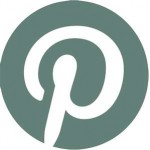 According to a recent study, social networking site Pinterest drove more referral traffic to sites this past January than Google+, Reddit, YouTube, LinkedIn and MySpace combined. Not familiar with referral traffic? Referral traffic is traffic that comes to your website through sources referring or linking to your site. Besides social networking sites, referral traffic can come from such sources as blogs, forums, and social bookmarking sites. Traffic coming from search engines does not apply.
According to a recent study, social networking site Pinterest drove more referral traffic to sites this past January than Google+, Reddit, YouTube, LinkedIn and MySpace combined. Not familiar with referral traffic? Referral traffic is traffic that comes to your website through sources referring or linking to your site. Besides social networking sites, referral traffic can come from such sources as blogs, forums, and social bookmarking sites. Traffic coming from search engines does not apply.
For those not in the know, Pinterest is essentially a virtual bulletin board that allows users to share images/links they find interesting or inspiring. Once shared, these images become “Pins” that can be placed on thematic “Boards” that users can customize for any topic. Once something is pinned, it can then be “Repinned” by other users. Pinterest was voted Best New Startup of 2011 by TechCrunch and one of the 50 Best Websites of 2011 by TIME magazine.
Since its launch in March 2010, Pinterest has experienced phenomenal growth. According to TechCrunch, the site just hit 11.7 million unique monthly U.S. visitors, crossing the 10 million mark faster than any other independent site in history. Who is contributing to this growth? Pinterest’s audience is predominantly women between the ages of 18 and 34. Content that appeals to women, including recipes, crafts, fashion, food, and travel, ultimately sends more referral traffic back to sites around the Web. Interestingly, Pinterest users aren’t spending that much time at the site — about 90 minutes a month, compared with 7 hours for Facebook.
To register for Pinterest, new users must receive an invitation from a friend already registered on the site or request an invitation directly from the Pinterest website. The registration process currently requires users to link their Pinterest account to a Facebook or Twitter account.
There are no obvious ads on Pinterest’s site. So how does the company monetize? It was recently revealed that Pinterest uses affiliate marketing to generate revenue. This means specific outbound links pinned on the site are converted to affiliate links. Thereafter, businesses reward Pinterest for each visitor or customer brought about by the site’s marketing efforts. Pinterest has experienced some backlash since users are not told when the original affiliate tracking code is replaced with Pinterest’s version. In the future, Pinterest may use branded pins and brand pages as ways to make money.
With Pinterest’s recent popularity, several copy-cat sites have shown up to cash in on the success. There are actually sites that copy Pinterest’s style, functionality and even portions of its name. For example, German copy-cat Pinspire is pretty much indistinguishable from the original.
Small and big businesses alike are finding ways to use Pinterest to connect with consumers. The site is still invite-only, and there are rules against blatant corporate promotion, but companies are finding ways around the restrictions. For example, Whole Foods created food Pinboards that encourage people to get in the kitchen and use their products (implying a trip to their local Whole Foods). Also, Land’s End held a contest where 10 Pinterest users received $250 gift cards for creating pinboards of their favorite Land’s End products. Can your company benefit from a presence on Pinterest? It is something to consider as the site becomes a major player in social media.
-Patrick Beggan, Mavidea Marketing Intern
